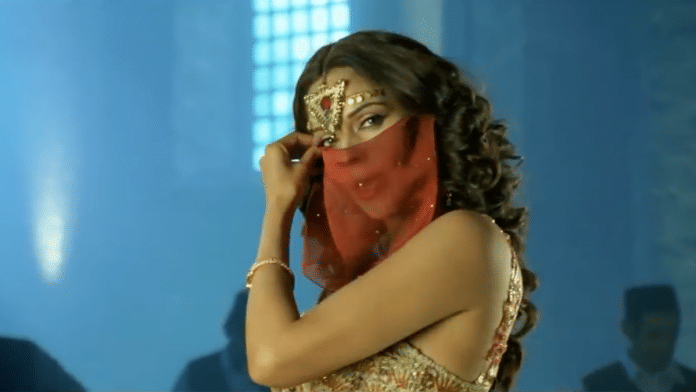Contact between nations is not only wrapped in history books, but celebrated every moment by people through words and expressions.
Qatar’s museums have decided to celebrate 2019 as “India-Qatar Year of Culture” to make their bilateral relationship stronger — a move greatly appreciated by Prime Minister Narendra Modi. But there is another relationship that goes beyond museums and deeper than economic, political ones between the two countries – the relationship of language.
Words like waqt (time), khabar (news) and dunya (world) are used in Arabic as well as Hindi and Urdu.
The mutual linguistic influences of Indian languages –particularly, Urdu and Hindi – and Arabic are quite robust and have endured the vagaries of times. Arabs in general and the Gulf states, in particular, have had a strong trade relationship with India. As merchants and traders, they travelled to the coastal cities of India including places in Kerala, which boasts of the first mosque built in India in 629 AD. As contact between Indians and Arabs became stronger, their transactions were no longer confined to goods alone. They started to learn each other’s languages, and as a result, Arabic words found their way into Indian languages, and similarly, Indian words became part of Gulf Arabic languages.
Also read: Urdu sounds are disappearing from Bollywood songs
Urdu, one of the widely spoken languages in South Asia, stands testimony to the relationship between Arabs and Indians. Although scholars argue that the influence of Arabic on Urdu is mediated by Persian, it is still indisputable that Arabic directly or indirectly did influence Urdu. The most robust and visible sign of the influence of Arabic on Indian languages is its impact on the script of Urdu and Sindhi.
Urdu is written in a modified version of the Arabic script. Sindhi used to be written in this script as well. On the spoken level, Arabic words such as qalam (pen), jeb (pocket), kitaab (book), safhaa (page), saaf (clean), kharaab (bad), ghalat (wrong) became common words not only in Urdu, but in other Indian languages. The intensity of the influence of Arabic on Urdu is nowhere more visible than in the field of human relationships. The address terms of the father in Urdu is abbaa, abbu, abbi — all variations of the standard Arabic word abun (father). The words for ‘love’, ‘lover’, and ‘beloved’ are mohabbat, mahboob mahbooba, all borrowed from Arabic. These words are part and parcel of Bollywood songs.
A more recent influence of Arabic can be seen in the use of the word khallas (finished) in some Bollywood film titles and songs. The 2007 film Khallas: The Beginning of End, directed by Sumeet Chawla is an example. In the 2002 Ram Gopal Varma film Company, Ajay Devgn delivers the famous line, “Aaj se tu aur teri company khallas (From today you and your company are finished)”. A famous song from the film also has the word khallas as a refrain in the song, “Yeh hai ishq samjha tujhe kar hi dega khallas”. Another example is the use of the Arabic word in the song “Mayya, mayya”, which is a slightly distorted form of the Saudi Arabic word for water ‘moya’, which composer A.R. Rahman learned from an Arab person while performing Haj in Makkah, and asked lyricist Gulzar to incorporate it into the song.
The 2002 film Awara Paagal Deewana has a bilingual song written in Hindi/Urdu and Arabic with the refrain in Arabic “ya habibi (my love)”. The song was written by Sameer and sung by Adnan Sami, Shaan, and Sunidhi Chauhan. The first stanza of the song “fainak ya habi fainak (where, oh where are you my love)” is in Arabic followed by a stanza in Hindi/Urdu starting with “dil ko chura ke mere… (after stealing my heart…)”.
Also read: The Polish ambassador to India is fluent in Hindi & Urdu, loves biryani and Bollywood
This linguistic influence flows the other way too. Indian languages also influenced the Arabic dialects– in general and the Gulf dialects in particular. For example, Yemenis have had a strong trade relationship with India. Dialects spoken in many parts of Yemen contain words of Indian origin, e.g. rooti (kind of bread), kambaa (pole), seeri (ladder), katturah (bowl), banes (cold water), etc. The Gulf dialect was also influenced by Indian languages, especially on the level of vocabulary. One of the most widely used words in Gulf Arabic is seedaa (straight), which is borrowed from Urdu/Hindi. When asking for directions, you will hear people say “Ruh seedaa (go straight)”. This word is also used in a metaphorical sense. Arabs from the Gulf might say, “Aanaa insaan seedaa (I am a straight-forward person)”. Other words of Indian origin in Gulf Arabic are jooti (shoes), chaawal (steamed rice), tijoree (safe-box), banka (fan), gaari (car). Arabs who are not from the Gulf or have not lived in the Gulf do not largely use these words.
This also shows that contact between nations is not only wrapped in history books, or museum articles, it is celebrated every moment by speakers through their words and expressions. Every time an Arab from the Gulf utters the word seedaa, they are announcing, although indirectly, the influence of Indian languages on their life, and similarly, when Indians use mohabbat or dunya they are testifying to the historical and linguistic relationships that bind the two nations together — the relationship built in vocal tracts.
The author is Associate Professor of Sociolinguistics, Department of English Literature and Linguistics, Qatar University, Doha.







The price of oil went up in 1973 and the Arabs invaded Bombay in 1974. That was the time the Oberoi hotel – now the Trident – opened, they gave it good custom. Some of them would sit in their hotel rooms and look out, enjoying the amazing sight of sheets of rain pouring down.